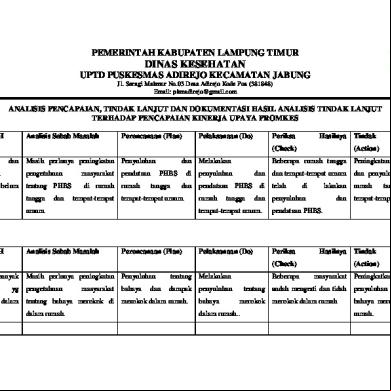Project Management-taj Mahal 2eu3a
This document was ed by and they confirmed that they have the permission to share it. If you are author or own the copyright of this book, please report to us by using this report form. Report 2z6p3t
Overview 5o1f4z
& View Project Management-taj Mahal as PDF for free.
More details 6z3438
- Words: 954
- Pages: 20
PROJECT MANAGEMENT - BY PROF. DEEPAK GUPTA
- ABDUL GHANI S.Y.B.B.A
As A Project
SOME BASIC KNOWLEDGE ABOUT TAJ MAHAL The Taj Mahal meaning “Crown of Palaces” is a white marble mausoleum located at the banks of Yamuna River in Agra, Uttar Pradesh, India. It was built by Mughal emperor Shah Jahan in memory of his third wife, Mumtaz Mahal (Arjumand Banu). The Taj Mahal is widely recognized as "the jewel of Muslim art in India and one of the universally ired masterpieces of the world's heritage". Taj Mahal is regarded by many as the finest example of Mughal architecture, a style that combines elements from Islamic, Persian, Ottoman, Turkish and Indian architectural styles.
ORIGIN OF TAJ MAHAL In 1631, Shah Jahan, emperor during the Mughal empire's period of greatest prosperity, was griefstricken when his third wife, Mumtaz Mahal, a Persian princess, died during the birth of their 14th child, Gauhara Begum. Construction of the Taj Mahal began in 1632. The court chronicles of Shah Jahan's grief illustrate the love story traditionally held as an inspiration for Taj Mahal. The principal mausoleum was completed in 1648 (17yrs.) and the surrounding buildings and garden were finished 5 years later. Emperor Shah Jahan himself described the Taj in these words: “Should guilty seek asylum here, Like one pardoned, he becomes free from sin.
CONSTRUCTION & INTERMENT A site was chosen on the banks of the Yamuna River on the southern edge of Agra and purchased from Raja Jai Singh in exchange for four mansions in the city. The site, "from the point of view of loftiness and pleasantness appeared to be worthy of the burial of that one who dwells in paradise". In January 1632 AD, Mumtaz's body was moved with great ceremony from Burhanpur to Agra.
Foundations The foundations represented the biggest technical challenge to be overcome by the Mughal builders. In order to the considerable load resulting from the mausoleum, the sands of the riverbank needed to be stabilised. To this end, wells were sunk and then cased in timber and finally filled with rubble, iron and mortar — essentially acting as augured piles.
Materials The Taj Mahal was constructed using materials from all over India and Asia. The buildings are constructed with walls of brick and rubble. Some of the walls of the mausoleum are several metres thick. Tthe sandstone was quarried 28 miles (45 km) away near Fatehpur Sikri.
ARCHITECTS & CRAFTSMEN The construction of the Taj Mahal was entrusted to a board of architects under imperial supervision, including Abd ul-Karim Ma'mur Khan, Makramat Khan, and Ustad Ahmad Lahauri. Lahauri is generally considered to be the principal designer. A labour force of twenty thousand workers was recruited across northern India. Sculptors from Bukhara, calligraphers from Syria and Persia, inlayers from southern India, stonecutters from Baluchistan, Ustad Ahmad a specialist in building turrets, another who carved
Some of the builders involved in construction of Taj Mahal are: Ismail Afandi (a.k.a. Ismail Khan) of the Ottoman Empire — Designer of the main Dome. Ustad Isa, born either in Shiraz, Ottoman Empire or Agra – credited with a key role in the architectural design and main dome. 'Puru' from Benarus, Persia – has been mentioned as a Supervising Architect. Qazim Khan, a native of Lahore – cast the solid Gold Finial. Chiranjilal, a lapidary from Delhi – the Chief Sculptor and Mosaicist.
COMPONENTS OF THE COMPLEX The focus and climax of the Taj Mahal complex is the symmetrical white marble tomb; a cubic building with chamfered corners, with arched recesses known as pishtaqs. It is topped by a large dome and several pillared, roofed chhatris. In plan, it has a near perfect symmetry about 4 axes. It comprises 4 floors; the lower basement storey containing the tombs of Jahan and Mumtaz, the entrance storey containing identical cenotaphs of the tombs below in a much more elaborate chamber, an ambulatory storey and a roof terrace.
DARK HISTORY OF TAJ MAHAL Abdul Hamid Lahauri, the author of the Badshahnama, the official history of Shah Jahan's reign, states Soon after the Taj Mahal's completion, Shah Jahan was deposed by his son Aurangzeb and put under house arrest at nearby Agra Fort. Upon Shah Jahan's death, Aurangzeb buried him in the mausoleum next to his wife. By the late 19th century, parts of the buildings had fallen badly into disrepair. During the time of the Indian rebellion of 1857, the Taj Mahal was defaced by British soldiers and government officials, who chiselled out precious stones
UNUSUAL FACTS ABOUT TAJ MAHAL The full height of the Taj Mahal is 171 metres (561 feet). The Taj Mahal covers an area of 42 acres in total. The cost of construction of the Taj Mahal was around Rs. 320 million. Around 22,000 people worked day and night for 22 years to complete construction of the Taj Mahal. Taj Mahal appears pink in the morning, white in the day and changes its color to golden in the moon light, it is the symbol of true love. The pillars surrounding Taj Mahal are slightly tilted outwards so that in the event of an
STEPS TAKEN BY GOVT. TO PRESERVE TAJ MAHAL The government and city authorities have taken measures to protect Indias greatest sight. Pollution stations around Agra monitor air quality around the clock. Car traffic has been banned within 2 kilometers of the monument. Electric and battery driven cars and buses take tourists to the site. A natural gas pipeline is also in discussion. Factories and industries around Agra are to be persuaded to change to cleaner forms of energy.
REPLICAS
TAJ MAHAL-
TRIPOLI SHRINE TEMPLE-
- ABDUL GHANI S.Y.B.B.A
As A Project
SOME BASIC KNOWLEDGE ABOUT TAJ MAHAL The Taj Mahal meaning “Crown of Palaces” is a white marble mausoleum located at the banks of Yamuna River in Agra, Uttar Pradesh, India. It was built by Mughal emperor Shah Jahan in memory of his third wife, Mumtaz Mahal (Arjumand Banu). The Taj Mahal is widely recognized as "the jewel of Muslim art in India and one of the universally ired masterpieces of the world's heritage". Taj Mahal is regarded by many as the finest example of Mughal architecture, a style that combines elements from Islamic, Persian, Ottoman, Turkish and Indian architectural styles.
ORIGIN OF TAJ MAHAL In 1631, Shah Jahan, emperor during the Mughal empire's period of greatest prosperity, was griefstricken when his third wife, Mumtaz Mahal, a Persian princess, died during the birth of their 14th child, Gauhara Begum. Construction of the Taj Mahal began in 1632. The court chronicles of Shah Jahan's grief illustrate the love story traditionally held as an inspiration for Taj Mahal. The principal mausoleum was completed in 1648 (17yrs.) and the surrounding buildings and garden were finished 5 years later. Emperor Shah Jahan himself described the Taj in these words: “Should guilty seek asylum here, Like one pardoned, he becomes free from sin.
CONSTRUCTION & INTERMENT A site was chosen on the banks of the Yamuna River on the southern edge of Agra and purchased from Raja Jai Singh in exchange for four mansions in the city. The site, "from the point of view of loftiness and pleasantness appeared to be worthy of the burial of that one who dwells in paradise". In January 1632 AD, Mumtaz's body was moved with great ceremony from Burhanpur to Agra.
Foundations The foundations represented the biggest technical challenge to be overcome by the Mughal builders. In order to the considerable load resulting from the mausoleum, the sands of the riverbank needed to be stabilised. To this end, wells were sunk and then cased in timber and finally filled with rubble, iron and mortar — essentially acting as augured piles.
Materials The Taj Mahal was constructed using materials from all over India and Asia. The buildings are constructed with walls of brick and rubble. Some of the walls of the mausoleum are several metres thick. Tthe sandstone was quarried 28 miles (45 km) away near Fatehpur Sikri.
ARCHITECTS & CRAFTSMEN The construction of the Taj Mahal was entrusted to a board of architects under imperial supervision, including Abd ul-Karim Ma'mur Khan, Makramat Khan, and Ustad Ahmad Lahauri. Lahauri is generally considered to be the principal designer. A labour force of twenty thousand workers was recruited across northern India. Sculptors from Bukhara, calligraphers from Syria and Persia, inlayers from southern India, stonecutters from Baluchistan, Ustad Ahmad a specialist in building turrets, another who carved
Some of the builders involved in construction of Taj Mahal are: Ismail Afandi (a.k.a. Ismail Khan) of the Ottoman Empire — Designer of the main Dome. Ustad Isa, born either in Shiraz, Ottoman Empire or Agra – credited with a key role in the architectural design and main dome. 'Puru' from Benarus, Persia – has been mentioned as a Supervising Architect. Qazim Khan, a native of Lahore – cast the solid Gold Finial. Chiranjilal, a lapidary from Delhi – the Chief Sculptor and Mosaicist.
COMPONENTS OF THE COMPLEX The focus and climax of the Taj Mahal complex is the symmetrical white marble tomb; a cubic building with chamfered corners, with arched recesses known as pishtaqs. It is topped by a large dome and several pillared, roofed chhatris. In plan, it has a near perfect symmetry about 4 axes. It comprises 4 floors; the lower basement storey containing the tombs of Jahan and Mumtaz, the entrance storey containing identical cenotaphs of the tombs below in a much more elaborate chamber, an ambulatory storey and a roof terrace.
DARK HISTORY OF TAJ MAHAL Abdul Hamid Lahauri, the author of the Badshahnama, the official history of Shah Jahan's reign, states Soon after the Taj Mahal's completion, Shah Jahan was deposed by his son Aurangzeb and put under house arrest at nearby Agra Fort. Upon Shah Jahan's death, Aurangzeb buried him in the mausoleum next to his wife. By the late 19th century, parts of the buildings had fallen badly into disrepair. During the time of the Indian rebellion of 1857, the Taj Mahal was defaced by British soldiers and government officials, who chiselled out precious stones
UNUSUAL FACTS ABOUT TAJ MAHAL The full height of the Taj Mahal is 171 metres (561 feet). The Taj Mahal covers an area of 42 acres in total. The cost of construction of the Taj Mahal was around Rs. 320 million. Around 22,000 people worked day and night for 22 years to complete construction of the Taj Mahal. Taj Mahal appears pink in the morning, white in the day and changes its color to golden in the moon light, it is the symbol of true love. The pillars surrounding Taj Mahal are slightly tilted outwards so that in the event of an
STEPS TAKEN BY GOVT. TO PRESERVE TAJ MAHAL The government and city authorities have taken measures to protect Indias greatest sight. Pollution stations around Agra monitor air quality around the clock. Car traffic has been banned within 2 kilometers of the monument. Electric and battery driven cars and buses take tourists to the site. A natural gas pipeline is also in discussion. Factories and industries around Agra are to be persuaded to change to cleaner forms of energy.
REPLICAS
TAJ MAHAL-
TRIPOLI SHRINE TEMPLE-










